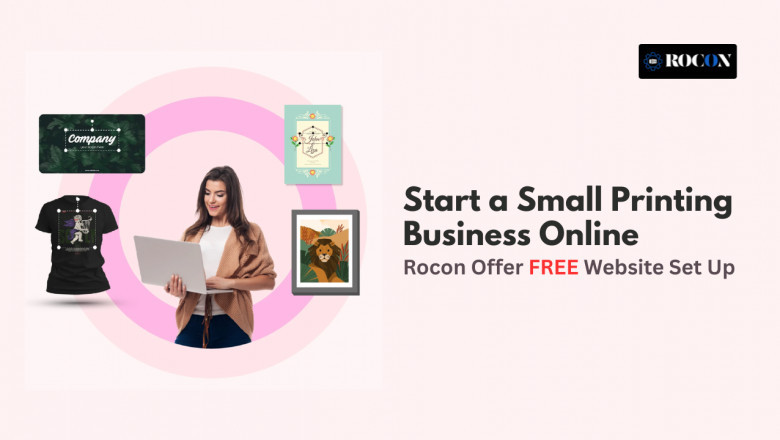views
If you're looking for a practical and scalable way to become your own boss, one great option is to start a small printing business. With businesses, schools, nonprofits, and individuals still needing everything from flyers and business cards to banners and branded merchandise, the printing industry—despite the rise of digital media—is alive and well. The key is finding your niche, investing wisely, and building a service-oriented brand that earns trust locally or even online.
Starting small means you don't need a huge budget to get going. In fact, many successful printing businesses begin from home with just a few key tools and a targeted customer base. Whether you're interested in traditional printing, custom apparel, or promotional items, there’s room to grow—if you take the right steps.
Step 1: Define Your Niche
The printing business is broad, so narrowing your focus from the start helps you operate more efficiently and market more effectively. Here are a few niche ideas to consider:
-
Business cards and stationery for local companies
-
Wedding invitations and event printables
-
T-shirt and apparel printing
-
Promotional merchandise (mugs, pens, totes)
-
Banners, signs, and vinyl decals
-
Eco-friendly or recycled paper products
Start by asking yourself what kind of clients you want to work with and what services are in demand in your area. From there, shape your business model accordingly.
Step 2: Set Up a Basic Workspace
You don’t need a commercial office space to start a small printing business. Many entrepreneurs begin from home or in a garage, especially when testing the waters. The essentials will vary based on your niche but might include:
-
A reliable computer with design software (like Adobe Illustrator or Canva Pro)
-
A high-quality printer or press (laser, inkjet, DTG, or screen printing setup)
-
Cutting and binding equipment if you offer physical marketing materials
-
Packaging materials for shipping or local delivery
Start with what you need for your core offering, then scale up as the orders come in.
Step 3: Learn the Tools of the Trade
If you’re not already familiar with design tools, now’s the time to learn. Even basic layout and design knowledge can save you money and increase your product quality. Adobe Creative Suite is industry standard, but tools like Canva, Affinity Designer, and CorelDRAW are great for beginners and budget-conscious startups.
Also, make sure to learn about different printing techniques and materials. Knowing what works best for specific products will help you advise your clients better—and stand out from the competition.
Step 4: Build Your Online Presence
Even if your focus is on local customers, having a website is non-negotiable. Use a simple WordPress website with eCommerce capabilities (WooCommerce works great for product orders). Highlight your services, showcase a portfolio, and include pricing, order forms, or request-a-quote options.
Make sure to:
-
Claim your Google Business Profile
-
Use social media to post finished products and engage with your community
-
Run small paid ads targeting local businesses or niche markets
Step 5: Price Your Services Competitively
Do some research into what local competitors charge for similar services. Your pricing should reflect your experience, materials, and time—but still be competitive enough to attract first-time clients. Consider offering bundle packages or discounts for referrals in the beginning to build momentum.
Step 6: Deliver Great Customer Service
When you’re just starting out, word of mouth is gold. Every order should come with clear communication, quality output, and timely delivery. Follow up with clients for feedback and ask happy customers for reviews.
Over time, this kind of service builds loyalty—and a solid base of repeat business.
Final Thoughts
To start a small printing business, you don’t need a storefront or a massive investment. What you do need is a solid niche, smart marketing, and a commitment to delivering high-quality service. With the right foundation, you can build a sustainable business that grows with your skills and your customer base.
Would you like a checklist template or a sample business name list for a printing business as a follow-up?














Comments
0 comment